Top Tier CPU Air Coolers Q3 2015: 9-Way Roundup Review
by E. Fylladitakis on July 6, 2015 8:00 AM ESTThe Phanteks PH-TC14PE
Phanteks is another world-renowned CPU cooler manufacturer, whose high performance designs made them widely known very quickly. Aside from coolers and fans, the company is now active in the field of PC cases as well. For the means of this review, Phanteks supplied us with the PH-TC14PE, their largest and most popular CPU cooler. The PH-TC14PE actually is over two years old, making it the oldest design in this roundup review.
Phanteks supplies the PH-TC14PE in a large cardboard box with an abstract design showcasing the color variations of the cooler. Inside the box, the cooler is well protected within a polyethylene foam shell and the bundled items are secured in small boxes. Aside from the hardware necessary for the mounting of the cooler, Phanteks also provides a tube of quality thermal grease, six anti-vibration rubber strips for the fans, a fan power cable splitter, a fan speed reducer. They also provide six wire clips and twelve plastic fan clip adaptors, for the installation of up to three fans onto the cooler's body.
The PH-TC14PE is a very large symmetric dual tower cooler. The fronts of the fins form small circular notches, with the exception of the top fin that is straight and serves as a cover for the heatpipes as well. One of its prominent features is instantly apparent, which is the colored fins. There are five color variations of the PH-TC14PE and we received the black version. Phanteks calls this "Physical Antioxidant Thermal Shield" (or Physical Antioxidant Thermal Spraying - we found both in the company's texts) and claims that it enhances thermal performance by both increasing the dissipation rate of the heatsink itself and decreasing the radiation absorption rate from other heat sources. The fins are soldered on the heatpipes with another patented method that Phanteks calls "Cold Plasma Spraying Coating", which supposedly increases the heat transfer rate between the copper heatpipes and the aluminum fins.
Phanteks provides two of their own PH-F140 140 mm fans with the PH-TC14PE. The company loves abbreviations, so the PH-F140 have "Updraft Floating Balance (U.F.B)" bearings, "Maelstrom Vortex Booster (M.V.B)" blades and "Maelstrom Air-Fort Optimization (M.A.F.O)" drive systems. Other than the fancy names, no real technical data or schematics of these technologies can be found. All we are left with is their standard manufacturer specifications, which indicate a maximum speed rating of 1300 RPM (1200 RPM in PWM mode). The design of the wire clips allows the fans to be moved upwards by several centimeters, providing clearance to RAM modules and heatsinks that would otherwise be blocked, assuming that the case is wide enough of course.
The base of the PH-TC14PE is simplistic, virtually meant only to provide mechanical retention for the installation on a CPU. Five thick 8 mm heatpipes run through the base and to both fin arrays on either side. The copper bottom half of the base and the heatpipes are nickel-plated, with the contact surface polished fairly well but not down to a perfect mirror finish. Slight machine marks can be seen on the contact surface but there are no major imperfections to speak of.


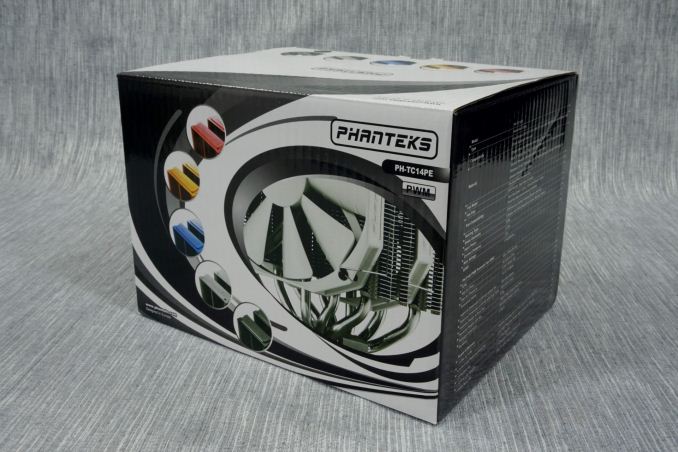
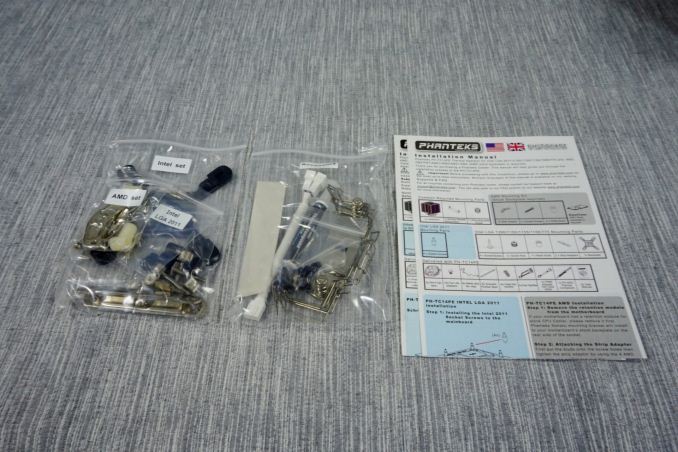
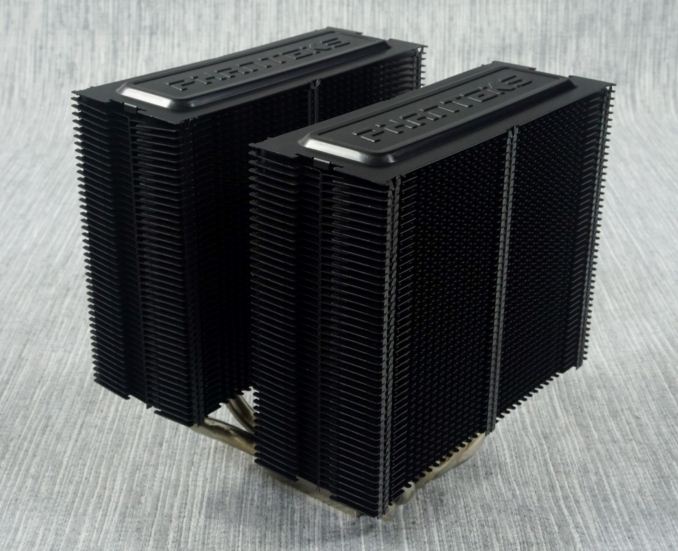
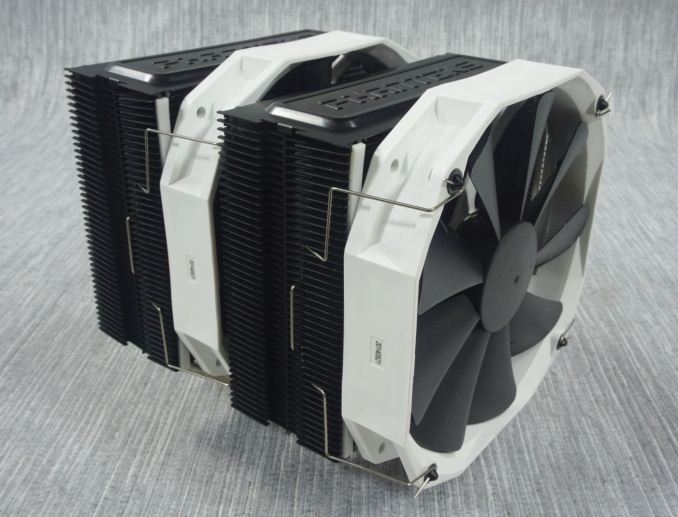
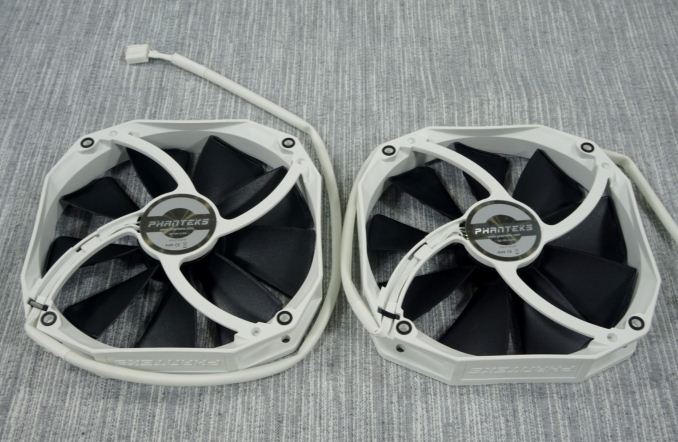
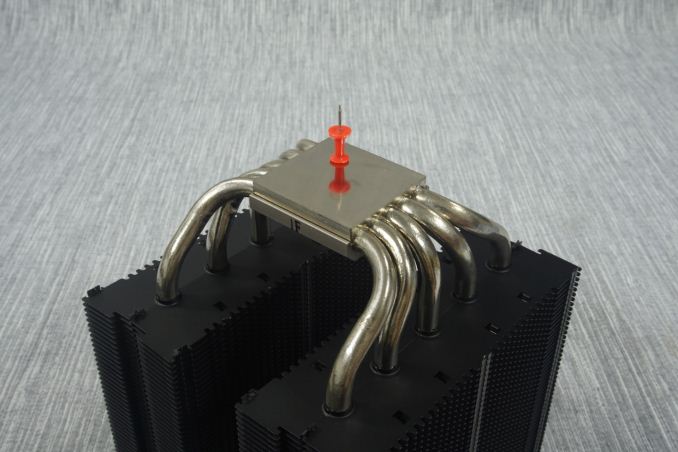








135 Comments
View All Comments
'nar - Tuesday, July 7, 2015 - link
I know right? I was so looking forward to a W/C vs A/C comparison after an intro like that.Margalus - Monday, July 6, 2015 - link
why didn't you test these all with the same fan? Then we could see how the cooler performed independent of the included fans? Like the Thermalright, it comes with no fan, apparently you got a super quiet slow fan and put on there, but that isn't fair to Thermalright saying they are hotter, when it could be because it doesn't have the amount of air moving over the fins as others.Beany2013 - Wednesday, July 8, 2015 - link
Thermalright provided the fan, so they can't grumble at the results.trandoanhung1991 - Monday, July 6, 2015 - link
When you talk about ultimate cooling, you should've at least tested the True Spirit 140 Power Edition with a TY-143 fan, or the Silver Arrow SB-E Extreme. Those are the most interesting products from Thermalright, not the Macho Zero.Maybe as an addendum at some point? I'm very interested to see how the Silver Arrow and the 140 PE fare against the D15.
Impulses - Tuesday, July 7, 2015 - link
Apparently the Macho is what TR themselves chose to send AT, if the intro is accurate... Big /facepalm on their part. They probably have some of the best value coolers in the TRUE Spirits (I have the original Cogage version myself), and the Silver Arrow might've ranked up there with the Noctua and Phantek. The article did make me pretty curious about the latter tho, call me vain but the color choices are cool.Calculatron - Monday, July 6, 2015 - link
Thanks for doing a heatsink round-up. They are refreshing to see these days.It is a shame that Thermalright did not send in its top-tier performer. Then again, the Macho Zero is nothing to sneeze at. ~40C over ambient for a 340 watt load is still a good result. (Perhaps, instead, they could have thrown the TY143 performance fan instead? Har!)
siberus - Tuesday, July 7, 2015 - link
I actually wish they would have sent 2 of the current fans so we could see if push/pull could push it up a performance bracket.rrohbeck - Tuesday, July 7, 2015 - link
I'd like to see the measurements all with the same fan(s) - whatever is considered "the best" fan. That would give an indication of how much you could get out of the cooler with aftermarket fans.'nar - Tuesday, July 7, 2015 - link
I wish there was more review cross-over with water coolers, these two camps seem to be at odds with each other. They never seem to be compared effectively to each other, so it is difficult for consumers to determine the "best" cooler for themselves. With Noctua getting up to $93, there are water coolers out there for less. I bought my Noctua NH-D14 for $75 and thought that was high for a HSF.I strictly used air coolers until I got an AMD APU, among them are several Noctua models. It was apparent to me that this CPU, after a bit of easy O/C, got hot much too fast for an air cooler to absorb. It would crash after just 4 seconds of starting Tomb Raider and the cooling fins were still ambient temperature. I tried three coolers including the Noctua NH-D14. Fan speed did not matter as the rapid increase in temperature exceeded the heatsinks' ability to draw the heat off the CPU itself. I would guess that it take anywhere from 30 seconds to a minute for the heat to actually get to the fins, so if your heat sink cannot "sink" the heat all by itself, no fan, for a full minute, then it has inadequate heat transfer and no fan will fix that.
I installed a Corsair H100i and that works very well. I had previously thought that any cooler with less surface area would have less cooling performance, but I have found that if you cannot transfer the heat to the fins, they make no difference. I think a Corsair H60 would have been fine now. I heard that water coolers were "better" and more efficient, but nobody ever explains WHY.
From this experience at least, it appears that water coolers have better heat transfer performance. Fan speeds and fins are secondary to that, as they do not matter until the heat gets to them. If they get hot, then low speed fans can easily remove that heat as higher temperature differentials generally allow for greater heat transfer. If you run high-power and high-heat for a long time, then higher fan speeds help.
How quickly can your test bench ramp up in power? Was that tested? Was that considered? CPU's can hit maximum power in nanoseconds, and crash in milliseconds. Only the base of the HSF would see anything from that event. I think this test is more academic, and not very relevant in the real-world with actual CPU's. It only tests for maximum heat generation over time, like when running benchmarks, not the dynamic nature in which CPU's operate for most useful loads. But then, that's just my perspective.
Pissedoffyouth - Tuesday, July 7, 2015 - link
I agree with you. I think the heat transfer through heatpipes takes quite some time to get to the fins